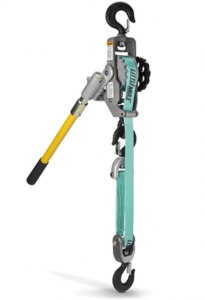
Bucket trucks are essential equipment for many industries, including construction, maintenance, and utility work. These vehicles allow workers to safely reach elevated work areas, but they also come with their own set of risks. To ensure the safety of workers and prevent accidents, it is crucial to regularly inspect and maintain bucket trucks. In this ultimate guide, we will outline the key steps and tips for conducting a thorough bucket truck inspection.
First and foremost, before inspecting a bucket truck, it is essential to review the manufacturer's guidelines and maintenance manual. These documents provide detailed information about the specific components of the bucket truck and the recommended inspection procedures. Following the manufacturer's guidelines ensures that the inspection is comprehensive and that all critical areas are checked thoroughly.
One of the crucial components to inspect on a bucket truck is the hydraulic system. The hydraulic system powers the movement of the bucket and the boom, so any malfunction in this system can be extremely dangerous. During the inspection, check the hydraulic hoses, fittings, and cylinders for any signs of damage, leaks, or wear. It is also important to check the hydraulic fluid level and condition to ensure that it is at the appropriate level and free of contaminants.
In addition to the hydraulic system, it is important to thoroughly inspect the electrical system of the bucket truck. Check all electrical connections, wires, and components for signs of wear, corrosion, or damage. Make sure that all electrical components are functioning correctly, including the controls inside the bucket and any safety systems such as emergency stop buttons and interlocks.
The structural integrity of the bucket and the boom is another critical area to inspect during a bucket truck inspection. Inspect the bucket and the boom for any signs of cracks, rust, or damage. Check the welds and connections for signs of fatigue or failure. It is crucial to ensure that the structural components of the bucket truck are in good condition to prevent accidents or collapses while working at height.
The tires and wheels of the bucket truck also require regular inspection to ensure safe operation. Check the tires for signs of wear, damage, or low pressure. Make sure that the lug nuts are tightened to the manufacturer's specifications and that the wheels are aligned correctly. Proper tire maintenance is essential to prevent blowouts or other tire-related accidents while operating the bucket truck.
Inspecting the controls and safety features of the bucket truck is another crucial aspect of the inspection process. Check that all controls are functioning correctly and that there are no signs of damage or wear. Test all safety features, such as the emergency stop button, the boom interlocks, and the hydraulic pressure relief valves, to ensure that they are operational and can effectively protect workers in case of an emergency.
In addition to the mechanical components of the bucket truck, it is important to also inspect the overall condition of the vehicle. Check the exterior of the bucket truck for signs of damage, rust, or corrosion. Inspect the interior of the cab for cleanliness, proper organization of tools and equipment, and the condition of the seats and safety restraints.
Finally, after completing the inspection, it is crucial to document all findings and any maintenance or repairs that were performed. Keeping detailed records of inspections, maintenance, and repairs helps track the condition of the bucket truck over time and ensures that all necessary tasks are completed on schedule. Regular inspections and maintenance are key to preventing accidents and ensuring the safety of workers who operate bucket trucks.
In conclusion, conducting a thorough bucket truck inspection is essential to ensure the safety of workers and prevent accidents. By following the manufacturer's guidelines, inspecting critical components such as the hydraulic system, electrical system, and structural integrity, and documenting all findings, operators can maintain their bucket trucks in optimal condition. Regular inspections and maintenance are key to avoiding dangers and ensuring the safe operation of bucket trucks in various industries.
